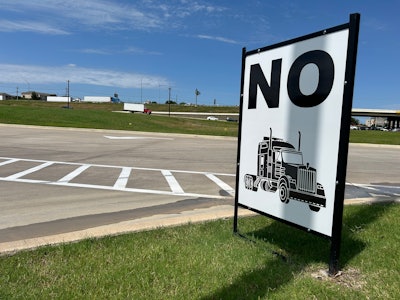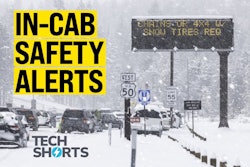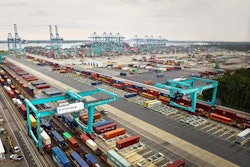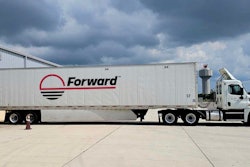
Truck parking has been one of the industry’s top concerns for the past two years. According to the American Transportation Research Institute (ATRI), it’s currently the number one issue for drivers – rising above pay (No. 2) and the economy (No. 3).
Drivers are losing freedom and facing significant financial and safety challenges. To secure parking, most are shortening their workdays. ATRI research shows that drivers search for parking an average of 56 minutes daily, costing them $5,500 annually – approximately 12% of their income.
Many fleets now use mobile driver apps to address this and other navigation-related problems. With a few finger taps, drivers can locate and reserve parking along their routes from a single interface.
Let’s explore two ways the technology can address the parking crisis to keep them safe and on the road longer.
Real-time parking availability
The Owner-Operator Independent Drivers Association (OOIDA) estimates that one parking spot is available for every 11 trucks on the road, representing a daily nationwide shortage of more than 40,000 spaces. Spots fill up quickly during peak evening hours, compelling drivers to search for parking, which wastes valuable time from their 11-hour drive cycle.
Drivers need to know what parking is available ahead of time to secure a spot. Only then can they strategically plan routes to maximize drive time and keep them safe and on schedule.
Many truck stops have online reservation systems for drivers to secure parking. Another option is to use services like Truck Parking Club, which partners with private landowners and offers an online system for drivers to secure spots before hitting the road.
States are also stepping up. Many have technologies like sensors and cameras that locate parking availability at rest stops and share real-time information via roadside signs that show parking spots ahead; online modules that show available spots by location; and APIs that share real-time parking information with third-party apps.
Additionally, some commercial driver apps use crowdsourcing. By knowing driver locations, apps like Trucker Path poll users about parking availability where they are and use real-time and historical data to estimate parking availability for nationwide locations by day and time.
Advanced reservation systems
To address the parking crisis, drivers need more than a map of available parking locations or various websites to reserve parking. An integrated mobile app can provide real-time information about parking availability for preferred locations along their routes. Moreover, drivers can reserve spots in advance to save time searching.
As noted above, some online systems and mobile apps are part of this equation. However, federal cell phone laws prohibit drivers from using mobile devices in motion. Therefore, drivers could benefit from an integrated trip-planning function that allows them to proactively make parking decisions long before arriving at pre-planned rest spots.
The most effective custom fleet apps go beyond providing simple parking information. They can integrate multiple data sources, such as fuel, traffic, weather, and parking information, into a single interface, taking a holistic approach to trip planning. This saves drivers time and reduces stress.
What can an integrated system bring together?
Third-party integrations
When planning stops, drivers can click a link to reserve parking in a third-party system. Once reserved, they can add the location to their route.
Route planning with navigation
Drivers can get truck-safe routing to designated locations for pickups, fueling, rest breaks, deliveries, and more.
Hours of service monitoring
ELD integration enables a custom fleet app to predict travel times between planned stops and time remaining on hours-of-service duty cycles.
Custom point of interest (POI) management
Fleets and drivers can add and share location information—such as designated parking spots—to create a collaborative routing network.
The broader impact
The truck parking crisis requires more than technology; fortunately, lawmakers are paying attention. The 2021 Infrastructure Investment and Jobs Act gave the U.S. Department of Transportation $292 million in grants to allow states to expand truck parking capacity.
Expanding capacity and technology solutions are needed to solve the truck parking crisis. Custom fleet apps can address the issue immediately, and as technology evolves, more solutions will emerge. For example, artificial intelligence could help predict available parking and automate the steps to reserve parking spots. The integration between systems will also become more robust and seamless.
Whatever your perspective on solving the truck parking crisis, technology will be essential to move ahead.










